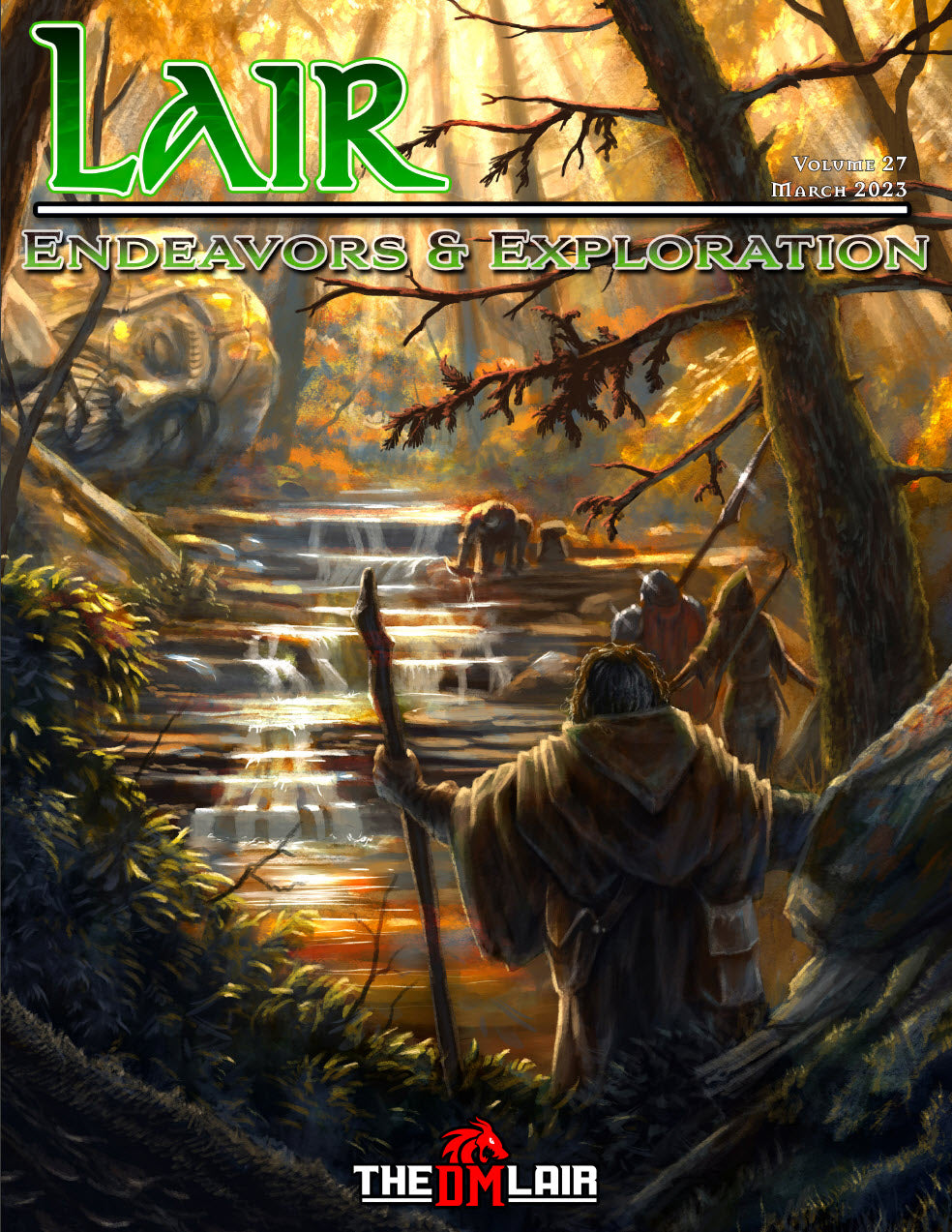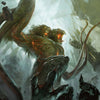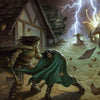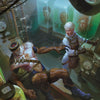How to Run Hex Crawls for D&D and TTRPGs
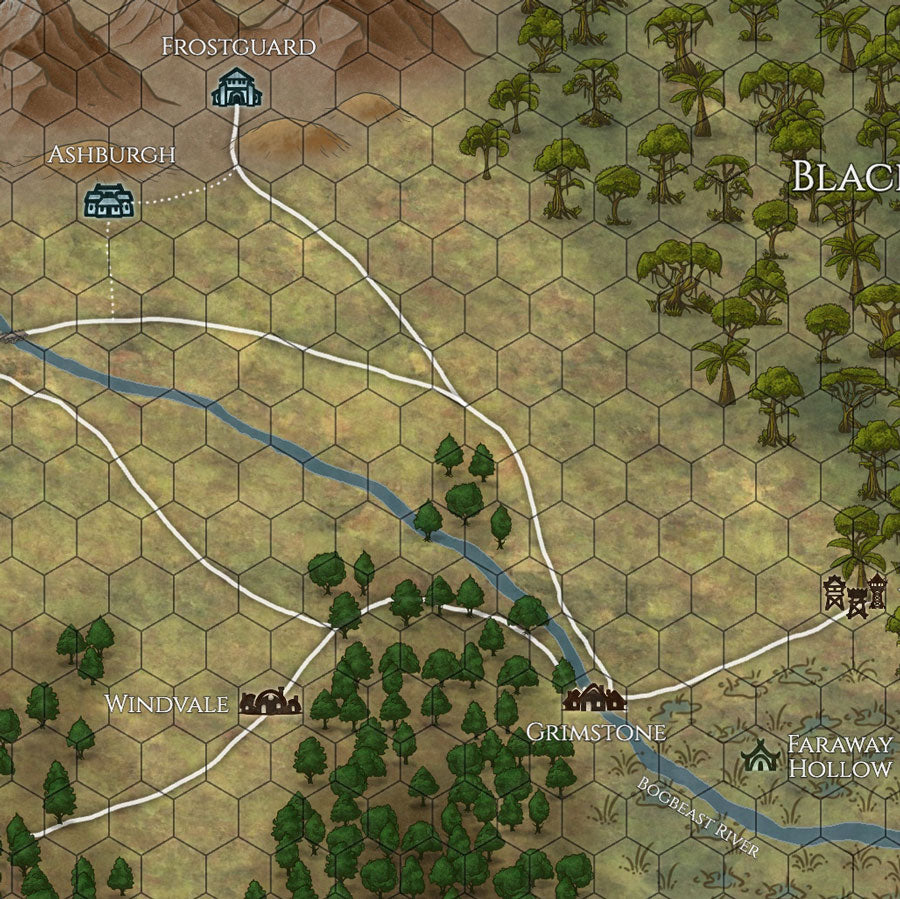
Although hex crawls can be rewarding and dynamic experiences and add much to a game, hex crawls are not intended to be used EVERY time the party needs to travel from point A to point B, especially on established routes. Instead, they should be reserved for significant overland travel when the region the characters are moving through is unexplored or otherwise unknown.
If the characters are exploring a wild area of a continent, searching for a legendary site or item without a clear destination, or perhaps searching for someone hiding or who has been taken by hostile forces to a secret location, a hex crawl could be just what you need. On the other hand, if your group turns out to love hex crawls, you could use them as frequently as you all like!
Watch or listen to this article instead by clicking the video below.
Preparing a Hex Crawl
Create a Map With Hexes
First, get yourself an overland map. You can make one yourself using a tool like Inkarnate or get a pre-made map such as the one available in Endeavors & Exploration, the March 2023 issue of Lair Magazine which features an entire hex crawl.
Next, you’re going to add hexes to the map – those are the hexagons that overlay the map itself. Now, each of those hexes is going to represent a certain SCALE. Now, for our map, we decided that each hex would represent 24 miles if one were to travel straight across it. However, other popular distances for hexes to represent are 6 miles and 12 miles. That way, if you assume a standard traveling pace, each hex could represent a quarter, half, or full day of travel. For large regions, I find it easier to use 24-mile hexes, personally, and a strong argument can be made that 8-mile hexes are actually ideal. More on that later.
Finally, you’re going to key the hexes, which means putting labels on each of the hexes. This will come in handy in the next step when we’re putting cool stuff in the hexes, and we need to keep track of what is where.
Populate the Hexes with Cool Stuff
For each (or at least most) of your hexes, you need to create something interesting for your players to find there when they travel through the hex. And there are lots of different types of things you can put in hexes.
First, you can place encounters with creatures and NPCs in hexes. These might be combat encounters, or they might be pure social interactions. You want them to be engaging and entertaining for your players, of course, but you also want to make sure each encounter has some challenge for the party to overcome. If it’s a combat, that’s fairly self-explanatory. For social interactions or non-combat encounters, it might be something like acquiring an NPC's trust to gather information, avoiding a stampede, or hiding from a band of hundreds of ravenous gnolls on the march.
Next, you can place locations or sites to be explored. These can be your typical location-based adventures – often referred to as dungeons – or other interesting and/or mysterious sites for characters to explore. These could be anything really, but here are some examples: ruins, native villages, wizards' towers, abandoned mines, isolated temples, mysterious palaces, mystical springs, and faerie circles, just to name a few. Now, these specific sites should be structured much like an adventure you design, and have a set number of encounters built into them, but never more than a standard adventuring day’s worth.
Finally, you could put Events in hexes. Events are a special kind of encounter that may incorporate creatures or sites. Usually, events advance the adventure's plot or introduce some wondrous element into the world. If the hex crawl involves territorial goblins and kobolds living in close proximity, an event may include the characters stumbling upon a battle between the two factions. If the characters need information about a region to complete a quest, they might encounter a legendary beast that carries the key to that knowledge. Or perhaps the characters stumble upon a field of geysers that only erupt in perfect unison once per century, and they just happened to arrive on that day.
Usually, every hex contains something, but depending on the scale you use, maybe they won’t. For instance, if you use a 24-mile hex scale, I would have every hex contain a pre-made encounter, location, or event. However, for 6- and 12-mile hexes, not every hex needs contain something. For any hexes that don’t contain something pre-made, you can just roll for a random encounter, or describe the area of the hex and have the characters move on to the next one.
If you don’t want to go through the mountain of work to create something separate for each hex, consider getting the Lairs & Legends Ultimate Bundle. It’s filled with a variety of resources, including full adventures and stand-alone encounters, that you can use to easily populate a hex crawl.
Create or Find a Random Encounter Table
The final step of preparing a hex crawl is creating some random encounter tables. You see, just because you’re pre-planning lots of different stuff for the hexes, you’ll still probably be using some random encounters. Now, I always recommend putting context around random encounters and not just listing numbers and names of creatures. Furthermore, make sure you include non-combat random encounters.
Of course, we have a few big sets of random encounter tables available for a variety of situations. Tiers 1 and 2 are in Book & Brawn, our November 2021 issue of Lair Magazine, while Tiers 3 and 4 are in Torches & Talismans, our December 2021 issue of Lair Magazine.
Running Your Hex Crawl
Blank Map
Yeah, you’ll want to give your players a version of the hex map that doesn’t have labels on it. That way they can mark their current location, decide where they want to go, and mark where they’ve already been – that sort of thing.
The Characters Decide Where to Go
Once your players decide which direction to travel, they progress into the hex that lies in that direction. They basically just choose which hex to go to next. Now, you do want to break travel up into increments. I suggest breaking each day’s travel up into 3 segments. Generally speaking, a group will travel 24 miles in a day, so we’ll break it up into 8-mile segments. That means that after every 8 miles of travel, you, the game master, check to see if a random encounter happens or if they come across a pre-made encounter, location, or event in the hex. This is why 8-mile hexes can be very good: they naturally break a day’s travel up into 3 hexes. However, if you want to split travel up into 4 segments or just 2 segments each day, then 6-mile and 12-mile hexes are better. It just depends on how you want to do it.
Now, if there is a pre-made encounter, location, or even in a hex, they will ALWAYS find it when they travel through the hex. You can have the group come across it during any of the travel segments or roll a d3 to decide which one. And then for the other segments of travel, there may or may not be a random encounter. You could roll a d12 and then have a random encounter occur on a 1, 2, or 3, for instance.
Time and Weather Tracking
Just in case you didn’t notice, keeping track of TIME is going to be important during a hex crawl. So, yeah, consider doing that. I also recommend tracking weather during hex crawls. This can add some cool flavor to the hex crawl experience, and even be mechanically impactful. The easiest way to do this is to roll on a random weather table once each day, and then describe the weather to your players. And don’t forget that the weather might impact that day’s travel or the encounters that they come across. The exact mechanics of that impact depend on the details of each, of course.
Of course, you may not want to go through all of the efforts of building a hex crawl yourself, only to find that you or your group don’t particularly care for them. If you want to just dip your toes into hex crawls and get your feet wet, consider picking up Endeavors & Exploration from the DM Lair store, which includes a small—but complete—hex crawl.
-
Posted in
Game Master How-To Articles

